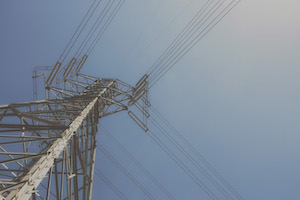Butler feels the heat
The past week’s temperature, with highs staying in the 70s and lows dipping into the 50s, is out of the ordinary for this summer.
The months of June and July have seen higher than average temperatures in Western Pennsylvania, including in Butler County.
Shannon Hefferan, lead meteorologist with the National Weather Service’s Pittsburgh station, said, while there has been a “hit or miss” environment with thunderstorms, depending on where you live, temperature averages have been up throughout June and July. She said the average daily high temperatures are slightly higher, but daily lows are noticeably up.
Hefferan said the greater Pittsburgh area’s July average daily low temperature was 68.2 degrees, tied for the fourth warmest on record. The average high was about 86 degrees.
“We have been above average on temperatures. For the greater Pittsburgh area, it’s been about the 10th warmest on record. The average temperature of July was about 77 degrees, and a lot of that was attributed to our low temperatures being so warm,” Hefferan said.
Some parts of Western Pennsylvania have had larger amounts of rain than others. Hefferan said this is due to “pulse storms” around the region have resulted in largely different rainfall totals scattered throughout the region.
National Weather Service Pittsburgh said this hit-or-miss environment has led to towns seeing greater than or less than 2 inches of precipitation compared to their normal averages, with regions north of Pittsburgh, like Butler, being drier this summer than further south.
Pulse storms can lead to heavy rainfalls, especially with a hot atmosphere.
“A lot of July was above average. These warmer temperatures can lead to more moisture in the atmosphere, it can hold more moisture,” Hefferan said.
In addition to residents dealing with more intense weather, the impacts of the heat and rain have other environmental impacts.
Stephen Campbell, a field and forage crops expert with Penn State’s Butler extension, said the weather this summer has had a noticeable impact on the agricultural industry in the county.
Campbell said, from what he has seen, local farmers are largely over a month behind on hay cutting, while certain plantings have been delayed. He said there are various planting dates the extension uses to measure progress on crops being planted and most farmers are “well behind.”
Campbell said the most common crops among Butler County farmers are corn, soybeans and hay. Bigger farms may diversify with small grains such as wheat and oats.
“It’s been a really interesting growing season, both here in Butler and across the state,” Campbell said. “From a hay perspective, with people making hay, we have been maybe been wrapping up our first cutting hay here at the end of July, or even this week, which is crazy, because usually we’re done with first cutting hay here in Pennsylvania by maybe the first or second week of June.”
He also said farmers are dealing with crop diseases more than usual. Periods of heavy rains along with heat have contributed to the spread.
“It’s been a challenge with diseases. Because of the heat and the rain, we’ve had some pop-ups with some diseases that normally we would see not as much of, but with the rain, the humidity, the heat, that’s kind of promoted somewhat of a disease environment,” Campbell said. “This is probably one of the more challenging years, at least from our team’s perspective. From June into July, the weather trends have been pretty rough, besides the past week.”













